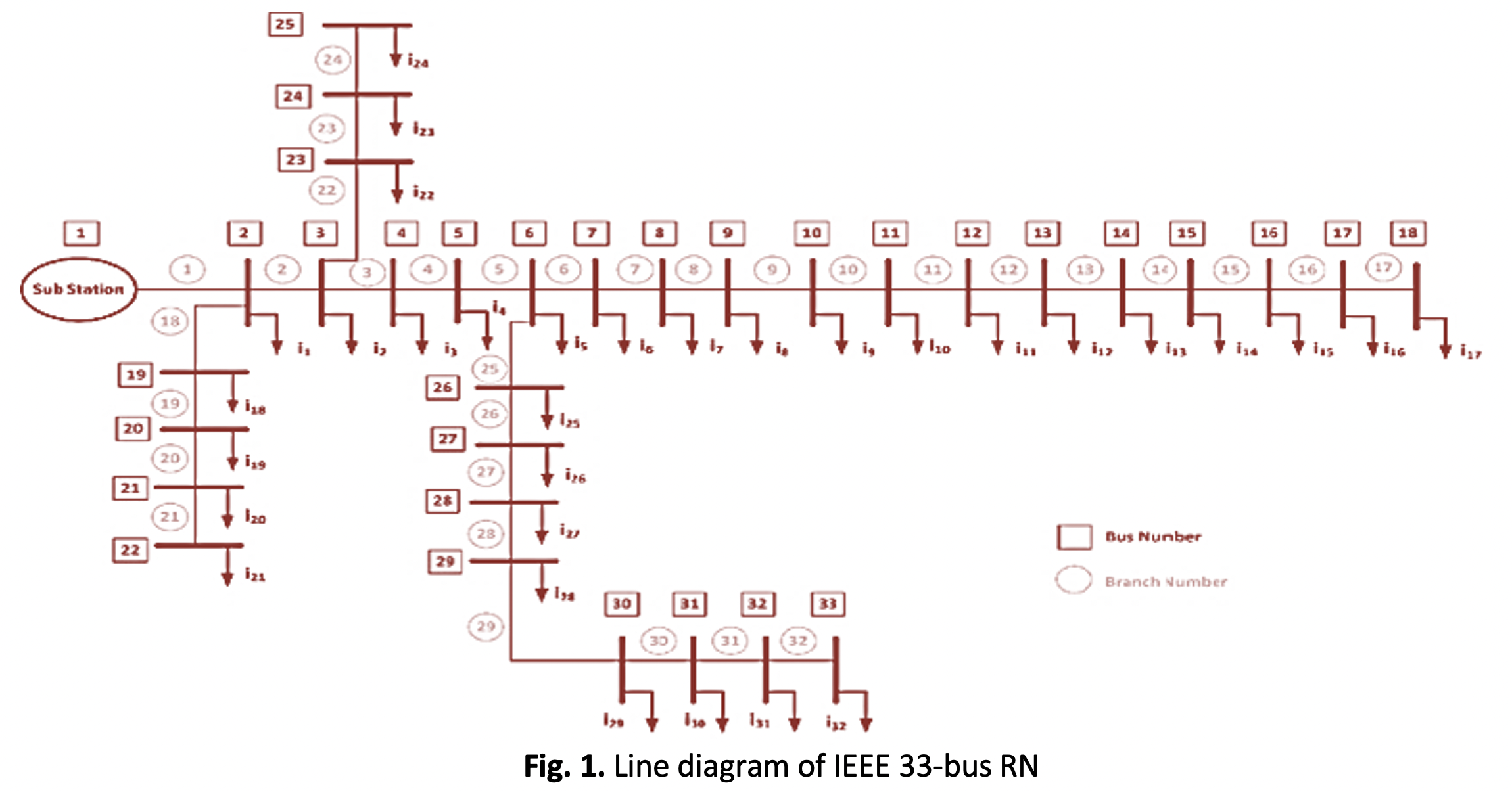Optimization of Energy Storage Unit Size and Location in a Radial Distribution Network to Minimize Power Loss Using Firefly Algorithm
DOI:
https://doi.org/10.37934/araset.31.3.2542Keywords:
Battery Energy Storage Systems (BESS), Distributed Generation (DG), Firefly Algorithm (FA), Conservation Voltage Reduction (CVR), Genetic Algorithm (GA), Ant Colony Algorithms (ACA)Abstract
By strategically deploying BESS sources within a distributed generation (DG) environment, power distribution losses could be reduced. Misallocation of these units may result in under- or overvoltage, which is undesirable. The objective is to select transit locations with the lowest possible losses and the greatest potential benefits. This study describes how to use a firefly algorithm (FA) to size a battery energy storage system (BESS) in order to minimise the voltage increase in a radial distribution network that employs a hybrid solar and wind energy conversion system (WECS). This research analyses the optimal capacity and positioning of the BESSs in a radial distribution network with 33 buses and 69 buses with the goal of minimising power loss to the greatest extent feasible. Solar photovoltaic (PV) systems, wind energy conversion systems (WECS), and energy storage systems (ESSs) are only some of the distributed energy resources that might benefit from the conservation voltage reduction (CVR) architecture proposed by this study. The proposed method is assessed by simulating it in Matlab while contrasting the results to those of the Genetic Algorithm (GA) and the Ant Colony Algorithm (ACA), among others.Downloads

Downloads
Published
2023-08-07
How to Cite
Suresh Babu Maddina, R. Thirunavukkarasu, & N. Karthik. (2023). Optimization of Energy Storage Unit Size and Location in a Radial Distribution Network to Minimize Power Loss Using Firefly Algorithm. Journal of Advanced Research in Applied Sciences and Engineering Technology, 31(3), 25–42. https://doi.org/10.37934/araset.31.3.2542
Issue
Section
Articles




























